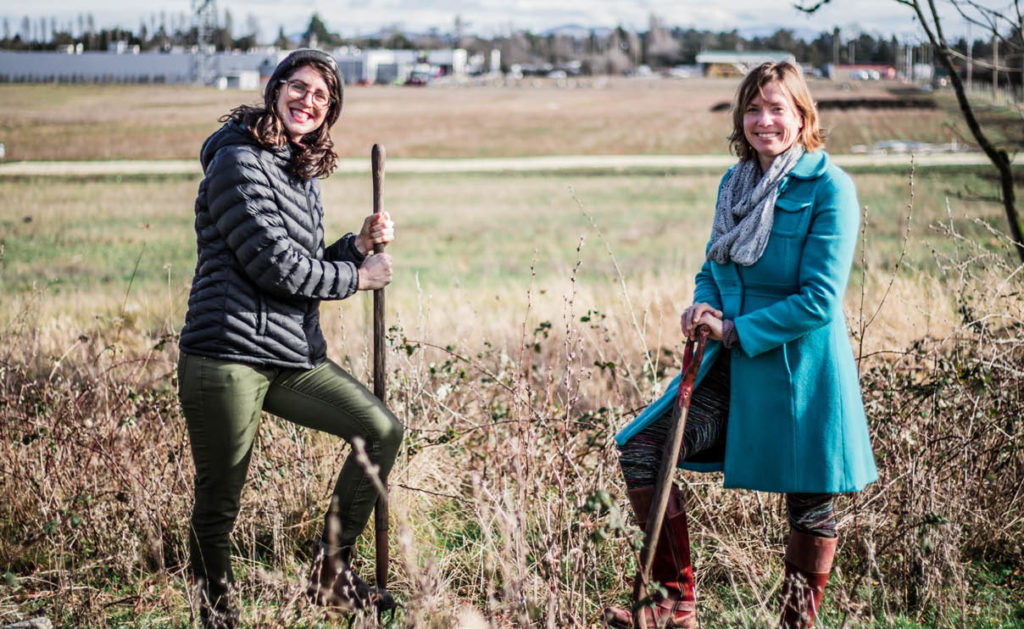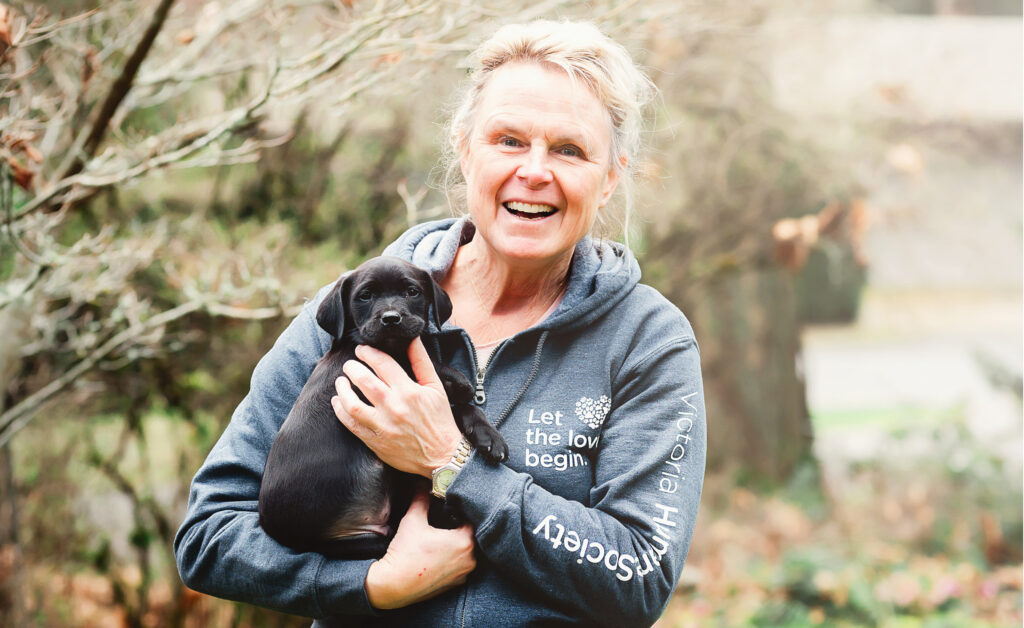by Jo Barnes | photos by Amanda Cribdon Photography –
Farming is all about growing. But it’s not always about growing plants or livestock; it is also about growing community.
The former Sandown Raceway site, on the traditional lands of the W̱SÁNEĆ people, now features the Sandown Centre for Regenerative Agriculture. It will be a hub that will build community and enhance local food security by offering farming opportunities for local people, allowing them to grow food, promote biodiversity enhancement, and education.
“The Peninsula is at a pivotal moment. Sandown will be an agriculture hub that supports biodiversity and education,” shares Jen Rashleigh, Director of Partner and Community Engagement (above right). “We want to celebrate the potential of the land and food abundance, connection and the abundance of community.”
The 83-acre property is part of the Agriculture Land Reserve (ALR) and when title of the land transferred to the District of North Saanich in 2017, this farming status was retained. As well, the 12 acres that are now being used for commercial use will ultimately benefit community agriculture.
“The original land was owned by the Randall Family. The District of North Saanich wanted to see the land utilized for active food production,” says Jen. “Twelve acres of the property was rezoned to industrial use and became the current Canadian Tire site. Fifty percent of its property tax goes to a district agriculture fund which funds the work at Sandown Centre.”
Farming these lands goes back well over 100 years. Originally, it was the Glamorgan Farm. Here owners Richard and Ann John raised five children and operated a thriving farm specializing in oat production. Subsequently over the years, the land has been owned by others who also dedicated their time and energy to the land, some raising cattle, others poultry and produce.
Addressing and achieving the full potential of the Sandown property means planning, perseverance and public participation. Working closely with the University of Victoria’s Ecological Restoration program, the plan is to plant and establish a thriving wetland zone. This will create a habitat to support beneficial pollinators and will enhance natural drainage, prevent soil erosion, provide flood control and filter out contaminants.
Also, the biodiversity of the forest is being choked out by a heavy presence of invasive ivy. Sandown Centre’s “Adopt a Patch” program is an amazing opportunity for community members to help rescue and revitalize this beautiful forest. How does it work? Each small “patch” is about nine square metres. The objective is to clear the ivy and then subsequently, when the timing is right, plant native plants to restore the biodiversity of the area. For details, visit https://www.sandowncentre.com/adopt-a-patch. Revitalization will take time, but the work has begun.
“It’s for small groups. You are working in your bubble,” shares Jen. “We are getting response, but we need more help. This is about land stewardship and our relationship to the land. We want to mobilize the community to have a sense of ownership.”
Another exciting opportunity is “Grow Your Own Food,” a season-long course not yet available but in the works for mid to late March. This highly valuable course will teach participants all the fundamentals in food production. Topics are diverse including garden planning and care, soil quality, pollinators, seed saving and much more. Classes will be held outside following provincial Covid regulations and will run every other week for a total of 12 classes.
“The way the program will work is that participants of the course will have their own plot on site that they will care for throughout the duration of the course,” comments Jennifer (Jenn) Cline, a food security advocate and former Assistant Farm Manager for A Rocha Canada (at far left).
Adds Jen Rashleigh: “You are surrounded by farmers for information, expertise and support.”
In addition, the “FarmPreneur” Program is ready to kick off with seven enthusiastic participants who will be farming their leased plots of land and enjoying a variety of shared amenities such as irrigation, greenhouse, fencing, hand tools, a field processing station and cold storage. They will also have connections to the local farm market such as South Island Food Hub and mentoring in eco-packaging and agri-tourism.
Restoring biodiversity, fostering farmers for the future, cultivating prosperity from the land and enhancing food security; Sandown Centre will be an incubator of inspiration.
Says Jenn Cline: “Food has the potential to build community, affect government policy, build, nourish and teach us.”
The Sandown property has long been a centre of community activity and involvement. Now in the hands of Sandown Centre, these lands can nourish, nurture and connect our community.
For more information, visit https://www.facebook.com/sandowncentre/.




